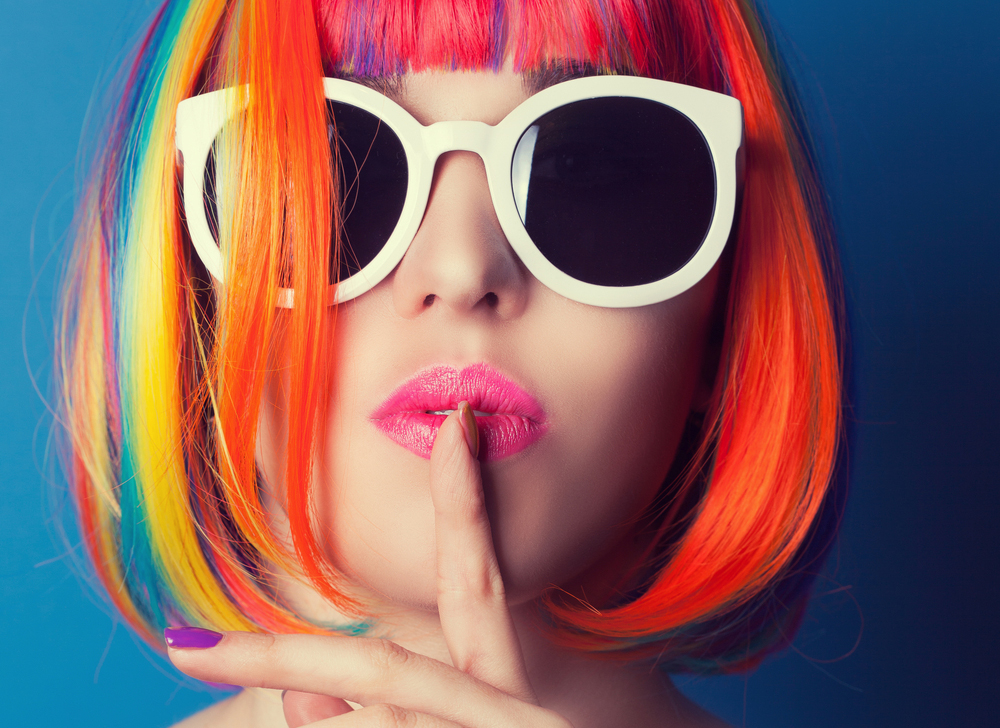Rebecca West wore a lot of black. “Magazines told me to wear dark colors to feel slender,” she says. Instead she felt awful. “Black washed out my fair skin, and I had to wear more makeup to compensate, which made me look older.”
An interior designer in Seattle, where dark days are the norm, West decided to lighten up. About two years ago, she banished black from her wardrobe and (for the most part) from her designs. “Now I wear juicy reds, teals, emeralds. The colors feel cheerful, and I smile more, so I look fresher and happier. And when I show up to a client’s house in a bright-coral raincoat, people always remark how nice it is to see the bright color with all the gray weather. It’s like carrying tulips with me everywhere I go.”
Related: 10 Clever Tricks to Trigger Positive Emotions
West also traded in her boring gray four-door for a lime-green ride. And she’s sure to incorporate rich wall colors, window treatments and floor coverings in her clients’ homes. She touts the power of waking up to a vividly hued wall in her book Happy Starts at Home, to be published this spring.
Humans have long connected colors with emotions (Are you green with envy? Do you feel blue? Is your outlook skewed by rose-tinted glasses?), but can color really change our mood? West believes so, but research doesn’t entirely back her up.
The science-ish-sounding idea behind the “greenroom” where performers relax before going onstage or on camera seems legit, for example, but there’s no evidence that greenish hues have any physiological calming effect. (Studies have shown, however, that viewing flora—whether it’s a ficus plant in the office or a cluster of trees outside a window—boosts mood. If the real thing isn’t possible, maybe a green wall could trick our impressionable brains, but there’s no hard proof that it does.)
Pink, perhaps? Several correctional institutions and police stations painted their cells bubble-gum pink—officially called “Baker-Miller Pink,” if you have in mind to make over your kids’ rooms—in the 1980s after the color reportedly reduced aggressive behavior (as well as physical strength) and lowered blood pressure and pulse rates. Subsequent studies, though, could not confirm the findings.
While it’s true that we have emotional and cultural associations with certain colors—yellow seems cheerful, red feels passionate, and blue may inspire tranquility—it’s these associations, not the colors themselves, that influence our attitude. And these associations can vary with gender, nationality, age and design trends. White, for example, symbolizes purity and renewal in the West, but it’s considered the color of death and mourning in Eastern nations.
Our color connotations can be powerful, however. One Cornell University study tracked penalties received by professional football and ice hockey players who wear black uniforms. Teams with black uniforms ranked near the top of their leagues in penalties during the course of the study, and when brighter-outfitted teams changed to black uniforms, “the switch was accompanied by an immediate increase in penalties,” the study authors found. Whether the players felt more aggressive wearing black or the referees perceived them as such isn’t clear, but the lesson is the same: Don’t paint your bedroom Darkest Ebony if you want to wake up on the sunny side. (Many color associations don’t hold water once tested, though. For example, Snopes.com says it’s a myth that red cars are pulled over or ticketed more often.)
Faber Birren, the late famed color theorist and author of more than 20 books on color, including Color Psychology and Color Therapy , believed that humans had the strongest negative reaction to yellow-green hues because of their association with sickness. In fact, negative experiences with color seem to be more visceral and indelible than positive ones, West says. “If you have terrible memories of your green elementary-school bathrooms, I’m not even going to try to convince you that a jade-painted wall could work in your home.”
Many of West’s clients say they want a particular color, but what they really desire is a feeling, she says. “They may want a sense of warmth or serenity, and you can get that with almost any color by softening its intensity.” Think of the difference between sunflower yellow and a soft butter shade. Saturation and undertones can make all the difference in how you feel about a color, West says.
Related: 11 Tips to Boost Your Mood and Be Happier
More than flat color, though, it may be colored lights that have an innate impact on our physiology and mood. Some studies have shown that exposure to red light—possibly because of its association with fire, blood and danger—can increase heart rate, making us anxious or amorous. Blue lights, in contrast, may lower it: After blue street lamps were installed in some areas of Glasgow, Scotland, the city noticed dips in crime in those locations.
Although the research isn’t definitive, try taping colored tissue paper over a window and see for yourself how it makes you feel. In the end, that’s what the color-mood connection is all about. If you think you look good in purple, you’ll be happier when you look in the mirror when wearing aubergine as opposed to chartreuse. That little boost in confidence can snowball throughout the day—you smile more, receive more compliments and summon the nerve to ask out your crush (who says yes, of course, because you look so fetching in purple!)—and make a big difference in your mood.
“Choosing color that makes you feel great is such an easy way to boost the happiness factor in your life,” says West, whose favorite color is peacock blue. The emphasis is on choice when it comes to a colorful life. Because the day you get sick of wearing purple is the day that its effect on your disposition dissipates. Avocado-colored refrigerators made our parents happy in the 1960s. Gray walls and stainless steel seem to make us feel good about our homes today. What colors will make us happy tomorrow?
Related: Take 10 Actions to Make This Your Best Day Ever
This article appears in the April 2016 issue of SUCCESS magazine.










